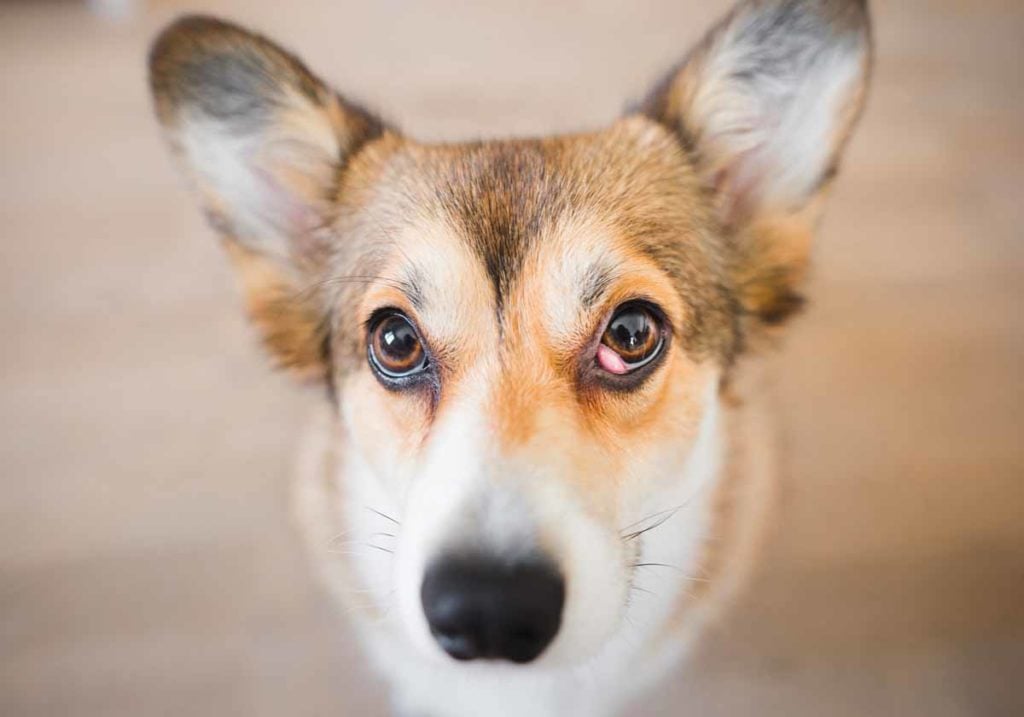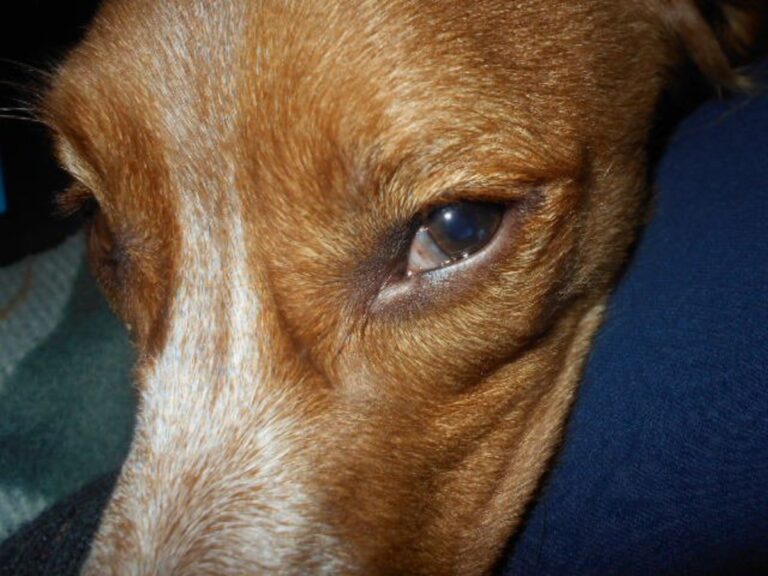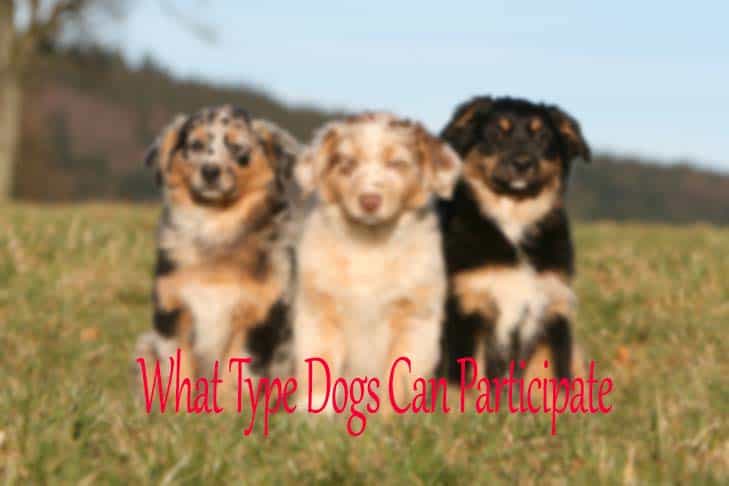As a pet owner, noticing your dog’s third eyelid showing in one eye can be alarming. While dogs have a nictitating membrane, also known as the third eyelid, that helps protect and moisten their eyes, its visibility in one eye may indicate an underlying issue. There are several reasons why your dog’s third eyelid could be protruding, including eye infections, trauma, foreign objects, or health conditions affecting the eye or overall well-being. Understanding the potential causes behind this phenomenon is crucial in ensuring your furry friend’s eye health. In this blog, we will delve into the mystery of why your dog’s third eyelid might be showing in one eye and provide insights on when to seek veterinary attention.
Understanding a Dog’s Third Eyelid
If you have noticed your dog’s third eyelid showing in one eye, it can be concerning. The third eyelid, also known as the nictitating membrane, is a thin layer of tissue that helps protect and moisten the eye. While it’s usually hidden in the corner of the eye, its visibility may indicate an underlying issue.
Causes of a Dog’s Third Eyelid Showing in One Eye
In some cases, the third eyelid may protrude due to irritants like dust, allergies, or foreign objects. However, if the condition persists, it could be a sign of more serious problems such as:
- Conjunctivitis: A common eye infection in dogs that causes inflammation of the tissues surrounding the eye.
- Cherry Eye: Occurs when the gland in the third eyelid prolapses, leading to a visible red mass.
- Eye Trauma: Injuries to the eye or surrounding area can also cause the third eyelid to be more prominent.
Treatment and Prevention
If you notice your dog’s third eyelid showing in one eye, it is essential to consult a veterinarian for a proper diagnosis and treatment plan. Depending on the underlying cause, treatment may include eye drops, ointments, or even surgery.

Common Reasons for Third Eyelid Showing in One Eye
Seeing your dog’s third eyelid showing in one eye can be concerning, but it’s essential to understand the possible reasons behind this occurrence. Here are some common factors that may lead to your dog experiencing this issue:
1. Eye Irritation
Dogs can experience eye irritation from various sources, including dust, pollen, or foreign objects entering the eye. When the eye is irritated, the third eyelid may protrude as a protective mechanism.
2. Conjunctivitis
Conjunctivitis, commonly known as pink eye, is an inflammation of the conjunctiva, the thin membrane covering the eye. This condition can cause the third eyelid to appear more prominently due to increased irritation and inflammation.
3. Corneal Ulcer
A corneal ulcer is a scratch or scrape on the surface of the eye, leading to pain and discomfort for your dog. In response to the injury, the third eyelid may show in an attempt to shield the damaged area and promote healing.
4. Stress or Anxiety
Just like humans, dogs can experience stress and anxiety, which may manifest in physical symptoms such as a protruding third eyelid. If your dog is under significant stress, it’s essential to address the underlying causes to alleviate this symptom.
Health Issues Associated with Third Eyelid Visibility
When your dog’s third eyelid is showing in one eye, it can indicate various underlying health issues that require prompt attention. The third eyelid, also known as the nictitating membrane, is a protective layer that helps keep the eye moist and shielded from debris. The visibility of the third eyelid in one eye can be a sign of discomfort or an underlying condition affecting your dog’s ocular health.
Common Causes of Third Eyelid Showing in One Eye
There are several reasons why your dog’s third eyelid may become visible in one eye. These can include eye infections, trauma, allergies, foreign bodies, or congenital abnormalities. It’s essential to consult a veterinarian to determine the specific cause and appropriate treatment.
Potential Health Issues
Visibility of the third eyelid in one eye can be associated with health issues such as conjunctivitis, cherry eye, dry eye syndrome (keratoconjunctivitis sicca), or corneal ulcers. These conditions can be painful and may lead to vision problems if left untreated.
Regular eye examinations and prompt treatment are crucial in maintaining your dog’s ocular health and preventing any long-term complications.
Methods to Address and Treat Third Eyelid Showing in Dogs
When your dog’s third eyelid is showing in one eye, it can be a cause for concern. Here are some methods to address and treat this condition to ensure your dog’s eye health:
1. Identify the Underlying Cause
Before beginning any treatment, it’s crucial to determine the root cause of the third eyelid showing. This may involve a visit to the vet for a comprehensive eye examination.
Some common causes of third eyelid showing in dogs include trauma, eye infections, allergies, or underlying health issues.
2. Treatment Options
Depending on the underlying cause, treatment options may vary:
- Medication: In cases of infections or allergies, your vet may prescribe eye drops or ointments to address the issue.
- Surgery: In some severe cases, when the third eyelid doesn’t retract properly, surgery may be required to correct the condition.
- Home Care: Follow any prescribed treatment plans diligently, and make sure your dog’s eyes are kept clean and free from irritants.
Frequently Asked Questions
- What is a dog’s third eyelid?
- A dog’s third eyelid, also known as the nictitating membrane or haw, is a transparent or translucent third eyelid that acts as an extra layer of protection for the eye.
- Why is my dog’s third eyelid showing in one eye?
- The protrusion of a dog’s third eyelid in one eye could be a sign of various health issues such as eye infections, foreign objects in the eye, eye trauma, or conjunctivitis. It is recommended to seek veterinary care if you notice this in your dog.
- Is it normal for a dog’s third eyelid to be visible?
- In some cases, it is normal for a dog’s third eyelid to be slightly visible, especially during certain actions like sleeping or when the eye is irritated. However, if the third eyelid is consistently showing and accompanied by other symptoms, it requires attention from a veterinarian.
- How can I prevent my dog’s third eyelid from showing abnormally?
- To prevent abnormal showing of the third eyelid, make sure your dog’s eyes are regularly checked by a veterinarian, avoid situations that can cause eye irritations or injuries, keep your dog’s eyes clean, and provide a balanced diet to maintain overall eye health.
Unveiling the Mystery: Understanding Your Dog’s Third Eyelid Phenomenon
After delving into the perplexing world of why your dog’s third eyelid is showing in one eye, we have uncovered some crucial insights into this common but often misunderstood occurrence. Remember, the third eyelid, or nictitating membrane, is a natural protective mechanism in dogs that can signal various underlying health issues. Whether caused by simple irritation or more serious conditions like cherry eye or infection, early detection and veterinary attention are crucial.
By staying vigilant and proactive in monitoring your furry friend’s eye health, you can ensure prompt treatment and prevent potential complications. Always consult your veterinarian if you notice any abnormalities in your dog’s eyes, as their well-being is our top priority.



